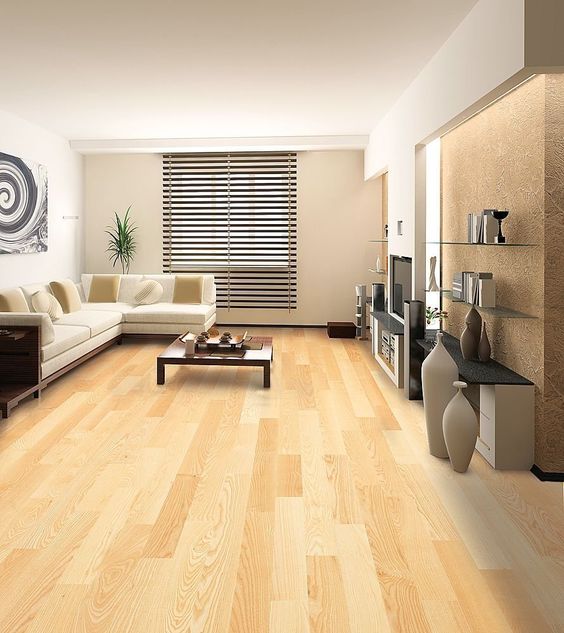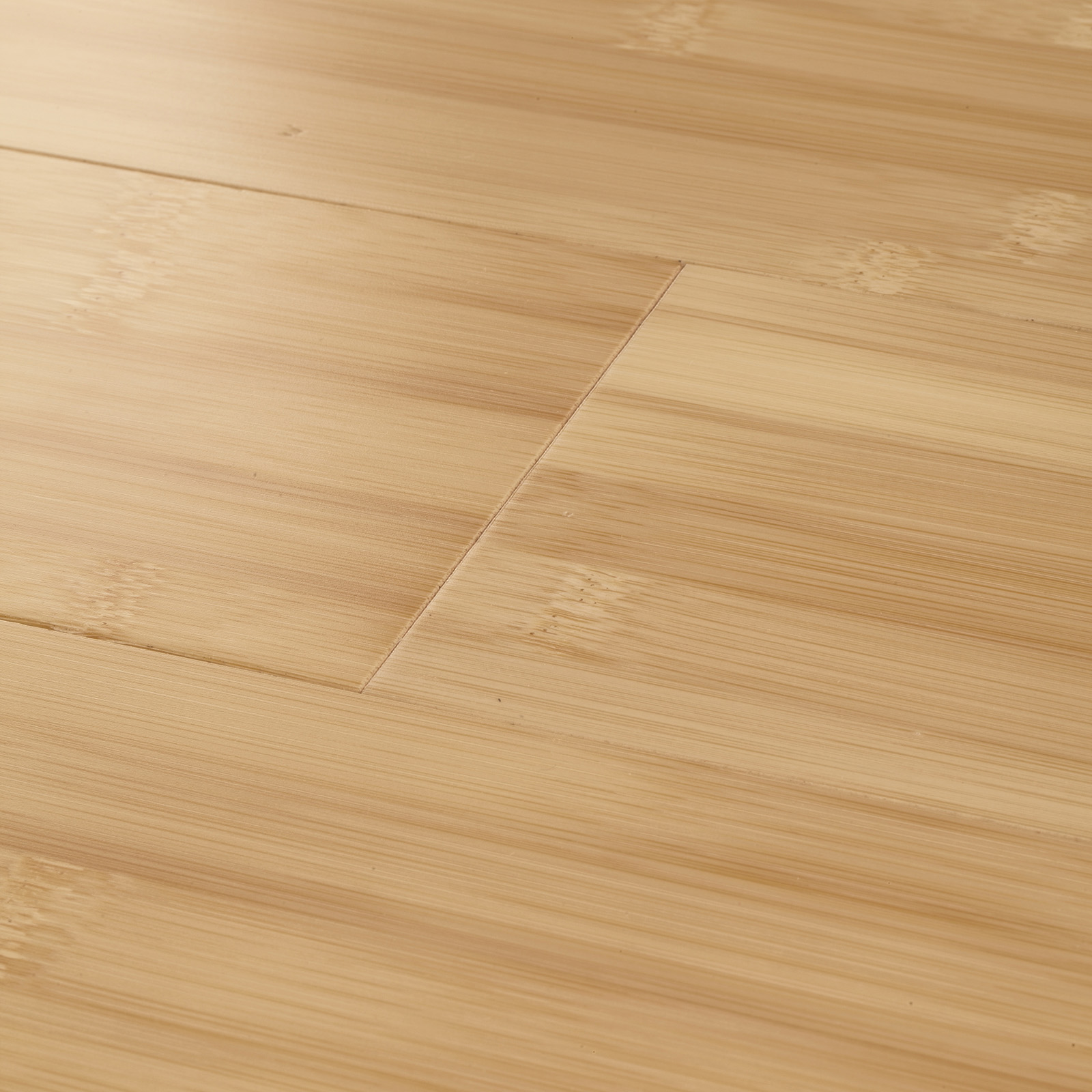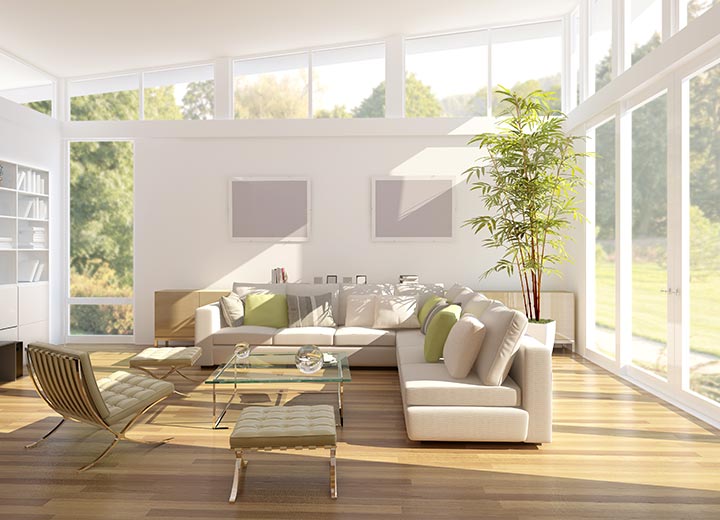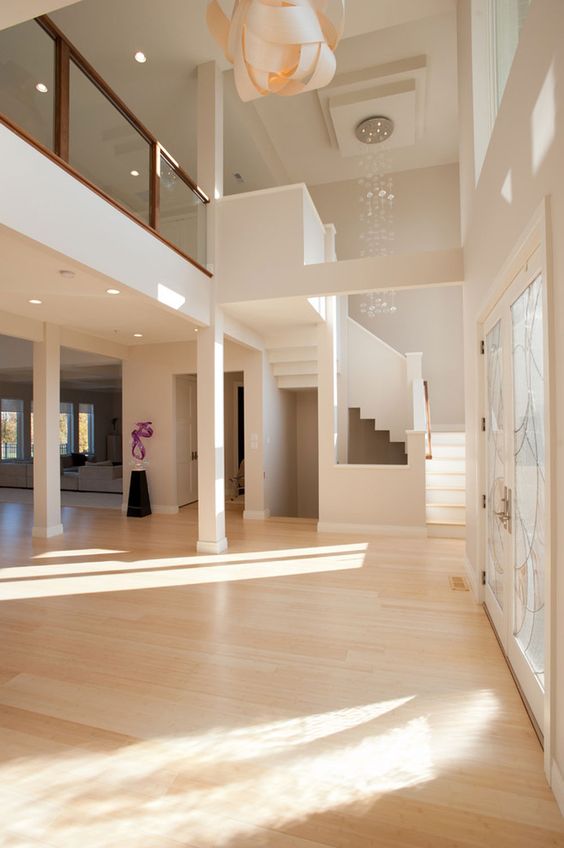What Is Light Bamboo Flooring?
If you’re looking for an eco-friendly, stylish flooring option, you’ve probably come across bamboo flooring in your search. Among its many types, light bamboo flooring stands out for its natural, airy appearance, making it a favorite for modern, minimalistic, or Scandinavian design styles. But what exactly is it? Let’s break it down.
- Bamboo vs. Hardwood: Although bamboo looks and feels similar to hardwood, it is a type of grass. Light bamboo flooring is made by harvesting bamboo stalks, which are then processed and transformed into planks for flooring. Its light color is achieved either through natural treatment or minimal staining.
- Harvesting and Manufacturing: The bamboo used for flooring is typically harvested after about 5-6 years of growth, making it a highly renewable resource. After harvest, it is cut into strips, treated, and compressed into flooring planks.
- Natural vs. Carbonized: Light bamboo flooring can be either natural (where the bamboo retains its original light color) or carbonized. The carbonization process darkens the bamboo but still keeps a relatively lighter tone compared to other flooring options.
- Texture and Grain: The grain patterns of light bamboo flooring can vary depending on how the bamboo is processed. Some floors feature a smooth, uniform look, while others might showcase unique grain textures, adding character to the space.
- Different Styles: Bamboo flooring comes in various styles, such as horizontal, vertical, and strand-woven. Light bamboo flooring in particular usually has a smooth, bright appearance that opens up spaces and makes rooms feel more expansive.
- An Alternative to Traditional Woods: Bamboo is increasingly viewed as a great alternative to traditional hardwood flooring. It provides the same elegance and longevity but with a unique eco-conscious flair. Its versatility and affordability make it a top contender in flooring options today.

Benefits of Choosing Light Bamboo Flooring
When deciding on flooring, there are a lot of options to consider. So, why go with light bamboo flooring? This material offers a host of benefits that make it an attractive option for homeowners and designers alike. Here are some reasons why you might want to consider this natural, sleek flooring for your home.
Eco-Friendly Choice: Bamboo is one of the most sustainable flooring materials on the market. Because it is a grass, it regenerates quickly and can be harvested without harming the environment. Light bamboo flooring gives you an eco-conscious choice without sacrificing style.
Brightens Up Spaces: Light bamboo’s natural brightness can help open up any room, making small spaces feel larger and more airy. This is especially beneficial if you’re looking to create a more modern or minimalist look in your home.
Affordability: Bamboo flooring tends to be more affordable than traditional hardwood floors. You get the aesthetics and durability of wood without the higher price tag. It’s a cost-effective option for those who want high-quality flooring on a budget.
Hypoallergenic: Bamboo floors, especially light bamboo, are excellent for people who suffer from allergies. They don’t trap dust, pollen, or other allergens, making them easier to clean and maintain compared to carpets or more porous materials.
Strength and Durability: Bamboo flooring, especially strand-woven varieties, is incredibly durable and resistant to wear and tear. It can handle heavy foot traffic and still maintain its beauty for years. Light bamboo is no different—it’s built to last while still maintaining its bright, clean look.
Easy Maintenance: Cleaning bamboo flooring is a breeze. A simple sweep and occasional mop are usually all it takes to keep your floors looking pristine. Plus, the light color helps mask dust and debris, which is great if you want low-maintenance flooring.
Durability and Lifespan of Light Bamboo Floors
Durability is one of the most important factors to consider when choosing a flooring material, and light bamboo flooring holds up well in this category. Despite its delicate appearance, light bamboo is known for its strength and longevity.
Strength Compared to Hardwood: Strand-woven bamboo, which is often used for light bamboo flooring, is even harder than some traditional hardwoods like oak and maple. This means it’s less prone to dents and scratches, which can be a major concern for busy households.
Resistance to Moisture: While bamboo flooring is more water-resistant than hardwood, it’s important to note that it’s not waterproof. With light bamboo flooring, it’s essential to clean up spills promptly and avoid excessive exposure to moisture. When cared for properly, it can last just as long as hardwood floors.
Longevity in High-Traffic Areas: If you have kids, pets, or frequently entertain guests, you’ll appreciate the durability of bamboo flooring. Light bamboo floors in particular can withstand significant foot traffic without showing signs of wear and tear.
Scratch and Dent Resistance: Though no flooring is entirely scratch-proof, bamboo does a great job of resisting minor scratches and dents. Light bamboo, especially when it has a protective finish, holds up well even in homes with pets.
Long-Term Investment: With proper care and maintenance, light bamboo floors can last for 20 to 30 years. Regular sweeping, avoiding harsh chemicals, and using rugs in high-traffic areas will help extend its life.
Refinishing Potential: Like hardwood, bamboo flooring can be refinished to restore its original beauty. If your light bamboo floors begin to show signs of wear after years of use, a simple refinishing process can bring them back to life.
Eco-Friendliness: A Sustainable Flooring Option
In a world where sustainability is becoming increasingly important, light bamboo flooring stands out as one of the most eco-friendly choices available. If going green is a priority for you, bamboo flooring should be on your radar.
Rapid Growth: Bamboo grows much faster than hardwood trees, taking only 3 to 5 years to reach maturity, compared to decades for traditional hardwoods. This rapid regeneration makes it a more sustainable resource for flooring.
Minimal Environmental Impact: Bamboo can be harvested without killing the plant. This means less soil erosion and less damage to ecosystems, especially compared to traditional logging methods used for hardwood floors.
Low Carbon Footprint: The production of bamboo flooring requires less energy and fewer resources than traditional wood flooring. Manufacturers also use non-toxic adhesives and finishes to minimize its environmental impact.
Biodegradable and Recyclable: Bamboo is a natural biodegradable material, making it a much greener option than synthetic materials. Additionally, bamboo flooring can often be recycled, reducing waste.
LEED Certification: Light bamboo flooring can help homeowners earn points toward LEED (Leadership in Energy and Environmental Design) certification, a globally recognized sustainability certification for buildings.
Contributing to a Sustainable Future: By choosing bamboo, you’re supporting sustainable practices and contributing to the reduction of deforestation. It’s a small but impactful way to ensure we’re protecting the environment for future generations.
Design Versatility: How Light Bamboo Fits Any Space
One of the most appealing aspects of light bamboo flooring is its versatility in design. No matter what style you’re going for, this flooring can adapt and enhance the aesthetic of any room.
Minimalist and Modern: Light bamboo’s clean, natural look fits perfectly in minimalist and modern design schemes. Its subtle grain and light color provide a neutral backdrop that complements sleek, contemporary furniture.
Scandinavian Style: If you love the bright, airy feel of Scandinavian design, light bamboo flooring is the perfect match. Its natural warmth pairs well with white walls, natural textiles, and simple, functional furniture.
Rustic and Bohemian: While light bamboo can feel modern, it also works well in more rustic or bohemian spaces. The natural, earthy tones of bamboo can be paired with textured rugs, plants, and eclectic decor to create a cozy, laid-back vibe.
Coastal and Beachy: Light bamboo flooring looks right at home in a coastal-inspired space. The light color mimics the look of sand and sea, making it a great choice for beach houses or rooms with a breezy, relaxed feel.
Transitional Spaces: For those who don’t subscribe to one particular design style, light bamboo works well in transitional spaces. It seamlessly bridges the gap between traditional and modern aesthetics.
Customizable Finishes: Light bamboo flooring is available in a variety of finishes, from matte to glossy. This allows you to customize the look of your flooring to match your specific design preferences.
Installation and Maintenance of Light Bamboo Flooring
Installing and maintaining light bamboo flooring is easier than you might think. Its simple care routine and flexible installation methods make it a favorite for both DIY enthusiasts and professional installers.
Installation Methods: Light bamboo flooring can be installed in several ways: nail-down, glue-down, or as a floating floor. The method you choose will depend on your subfloor and personal preference. Floating floors are especially popular for DIY projects, as they don’t require nails or glue.
Preparing the Subfloor: Before installation, it’s important to prepare the subfloor. Ensure that it is clean, dry, and level to prevent issues like warping or buckling later on.
Acclimation Process: Bamboo flooring needs to acclimate to the humidity and temperature of your home for a few days before installation. This ensures that the flooring doesn’t expand or contract too much once it’s installed.
Cleaning Routine: Maintaining light bamboo flooring is relatively simple. Regular sweeping and occasional mopping with a damp mop will keep it looking fresh. Be sure to avoid harsh cleaners or excessive water, which can damage the floor.
Protective Measures: To further protect your light bamboo floors, consider using rugs in high-traffic areas and felt pads under furniture legs to prevent scratches. Keeping your home’s humidity level stable can also help prevent the bamboo from expanding or contracting.
Long-Term Care: For long-term maintenance, refinishing your bamboo floors every few years can help restore their original shine and remove any surface damage. This is a great way to extend the life of your light bamboo flooring.
Comparing Light Bamboo Flooring to Other Flooring Types
If you’re trying to decide between light bamboo flooring and other popular options, such as hardwood, laminate, or tile, it’s helpful to compare the pros and cons of each.
Bamboo vs. Hardwood: Bamboo is often more affordable and eco-friendly than hardwood. While hardwood may have a more timeless appeal, bamboo’s sustainability and durability make it a worthy competitor. Light bamboo, in particular, offers a modern, bright alternative to traditional wood tones.
Bamboo vs. Laminate: Laminate flooring may be cheaper upfront, but it doesn’t have the longevity or sustainability that bamboo offers. Bamboo also provides a more authentic natural look, whereas laminate can sometimes appear artificial.
Bamboo vs. Tile: Tile is known for its durability and moisture resistance, but it can be cold and uncomfortable underfoot. Bamboo, while not as water-resistant, provides a much warmer and more comfortable surface, especially in living areas and bedrooms.
Bamboo vs. Vinyl: Vinyl flooring is easy to maintain and highly water-resistant, but it’s not nearly as eco-friendly as bamboo. Bamboo offers a natural, organic look that vinyl cannot replicate.
Bamboo vs. Carpet: Carpet may be softer and cozier, but it’s harder to maintain and can trap allergens. Bamboo, on the other hand, is hypoallergenic and much easier to keep clean, making it a better choice for those with allergies.
Final Thoughts: In terms of sustainability, style, and durability, light bamboo flooring holds its own against other flooring types. It’s a versatile option that works in almost any space, giving you the best of both worlds—beauty and eco-consciousness.
Bamboo Flooring Ideas With Pros And Cons
Bothbest Natural Eco Forest Solid Horizontal Bamboo Flooring Cheap Price
Related Posts:







